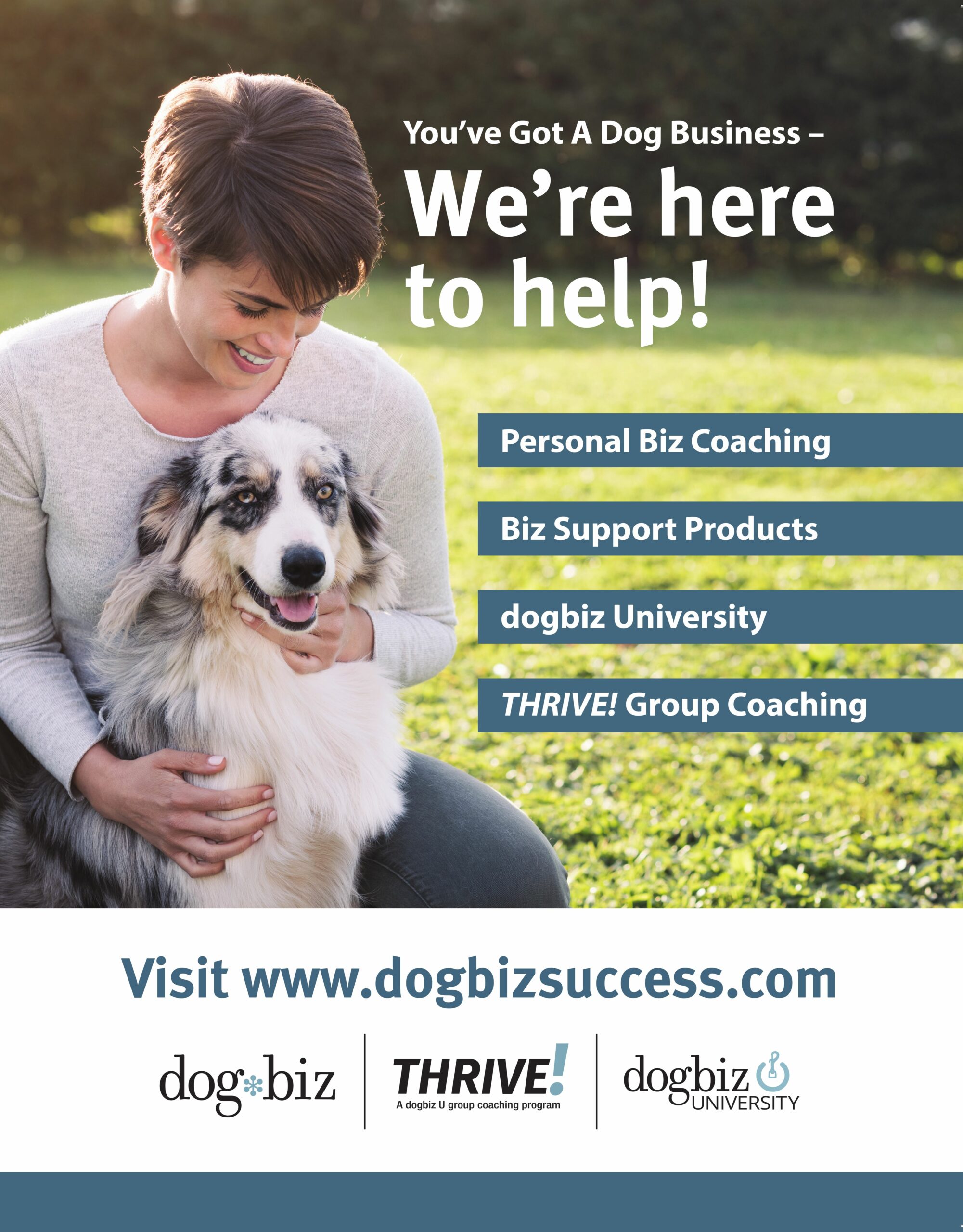Barks Blog
Escape-Proof Crates: If They Sound Cruel, It’s Because They Are

by Gwendy Williams
Many of us have been taught to embrace the benefits provided by crating dogs. It is why many animal caregivers avoid reading articles like this one. We don’t want to question something that has become customary and acceptable, even when we know instinctively that it’s not. Crates for dogs are, indeed, needed. However, the times that they are truly necessary account for a tiny fraction of how pervasively crates are used.
When we force our dogs into isolation for extended periods of time, the discomfort we cause them is clear. They let us know. Their scratching and howling are signs of emotional states that are difficult to misinterpret, even for first-time pet owners. Dogs crying and clawing at the walls of the box they are forced into, sometimes remaining locked in until their nails bleed and their teeth break (from trying to break out of the crate), are clear signs that they are being tormented.
The Multi-Billion-Dollar Business of Crates
The countless pet dogs who hate their crates are at risk of further torment with what the crating industry has introduced as inescapable or escape-proof crates—crates designed for dogs with a history of panic behaviors when confined. The distress a dog experiences in a regular wire crate is amplified by the closed environment of an inescapable crate.
Numerous companies are manufacturing these heavy-duty crates. One of these suffocating-looking boxes is called the High Anxiety Crate. Anybody placed inside one of these crates couldn’t help but feel entombed. During hot weather, leaving any thick-coated dog in such a crate could be life threatening.
Here is the sales pitch used on an Impact Dog Crates video used to sell the High Anxiety Crate:
Our renowned escape-proof dog crate is thoughtfully engineered to protect and outsmart pets who suffer from severe separation anxiety. The High Anxiety Crate’s welded structure, four additional butterfly latches, and carefully designed ventilation holes provide a safe den environment for dogs with destructive tendencies (Impact Dog Crates, 2023).
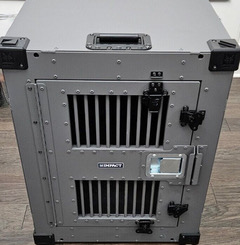
Their escape-proof crate can “outsmart” pets with severe separation anxiety! Well, that’s a trick and a half … except miracles don’t occur in crates! This marketing ploy is just a clever tactic to drive more sales. The strategy here is, “Name it, and they will believe it,” except a name is just a name. As with many marketers of controversial products, they co-opt words and distort their meanings, and some even spin cruelty as kindness. They do whatever they think will make their products sound more appealing and sellable. Why would anyone bother working with a veterinary behaviorist or anxiety specialist who has honed their skills for years to competently and humanely rehabilitate anxious dogs when all they have to do is put their dog in a vault-like box?
A skeptical person would want to know how this magic works. The vocalizing and exertion a desperate dog expends in trying to escape an inescapable crate strains, drains, and exhausts them physically, emotionally, and psychologically. Eventually, hopelessness sets in, and their spirit is crushed. This despondent state is celebrated by some balanced and punishment-based trainers, and even some pet owners, as positive behavioral change. They are thrilled with their demoralized dog because a dispirited dog is so much more manageable. Some people prefer a dispirited dog over an emotionally healthy one.
We Have Choices, They Don’t
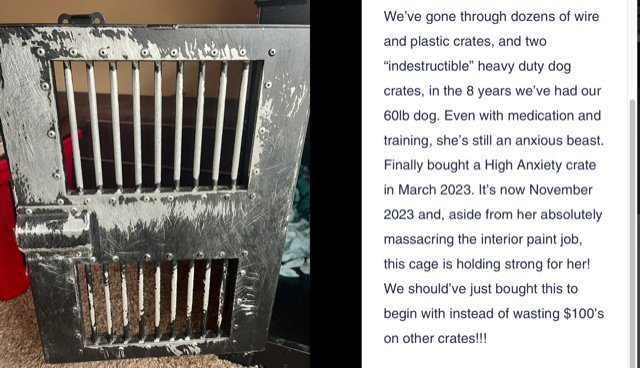
A testimonial and endorsement featured on the Impact Dog Crates website by a purchaser of a High Anxiety Crate stated that they previously went through dozens of wire, plastic, and heavy-duty crates in the eight years they’ve had their 60-pound dog. The purchaser wrote, “Even with medication and training, she’s still an anxious beast.” They further stated that they bought the crate in March 2023. “It’s now November and, aside from her absolutely massacring the interior paint job, the cage is holding strong for her!” They expressed that they wished they had bought the crate eight years ago.
The picture accompanying the testimonial showed that large portions of the surface paint on the inside of the door had been clawed off. Claw marks were etched into the remaining paint, revealing the anguish the dog endured. It is a haunting endorsement that is extremely difficult to get out of one’s mind. It definitely tells a story, but an extremely heartbreaking one. (The testimonial was removed from the Impact website prior to publication of this article.)
Dr. Jessica Pierce, a leading scholar in animal ethics and the author of Who’s a Good Dog? and How to Be a Better Human, noted that, in her opinion,
The IMPACT crate is an inhumane and cruel tool for confining dogs. I would urge people not to use this product or others like it and particularly not if they have an anxious dog. These crates have the potential to inflict serious and lasting psychological harm on our canine companions. We should see this product for what it is: a torture chamber. No dog should ever be subjected to one (personal communication, 2024).
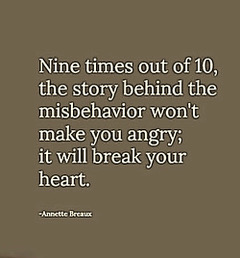
Individuals who experience anxiety and phobias describe their symptoms as a sudden onset of panic and feelings of being out of control, experiencing fear and sensations of suffocating, as well as experiencing muscle tension, breathlessness, trembling, sweating, confusion, and a desperate need to escape. Brain imaging studies have shown that people and dogs share similar emotions in similar situations (Berns, 2023). It’s difficult to imagine a dog locked in a box having to endure such symptoms indefinitely and repeatedly. It is a biological imperative for all animals, including us, to feel free.
Not all crated dogs are upset and distressed because they have been separated from their owners. Many dogs are fearful and frustrated in general, and confinement heightens the intensity of these emotions. Some dogs have medical issues, like back pain, poor circulation, muscle spasms, osteoarthritis, or other afflictions, that make restricted movement painful and leave them in discomfort. Regardless of the reason an animal hates being confined, to deliberately keep an animal that way disparages the animal’s sentience. Crates do not provide safety and protection—we do.
Millions of dogs that are routinely crated against their will learn that it is only a matter of time before they will be crated again. The worry and fear of being crated leaves many dogs chronically anxious. Fear changes the brain, and this leaves these dogs suffering in or out of the crate. When people experience multiple traumatic events, the risk for developing severe stress disorders increases (Kube, Elssner & Herzog, 2023). Dogs that are repeatedly traumatized will also develop severe and chronic stress.
Who Will Rescue the Rescued?
Recently, a number of rescues, foster homes, and sanctuaries have showed up on Facebook pages pleading for free escape-proof crates or the funds to buy them.
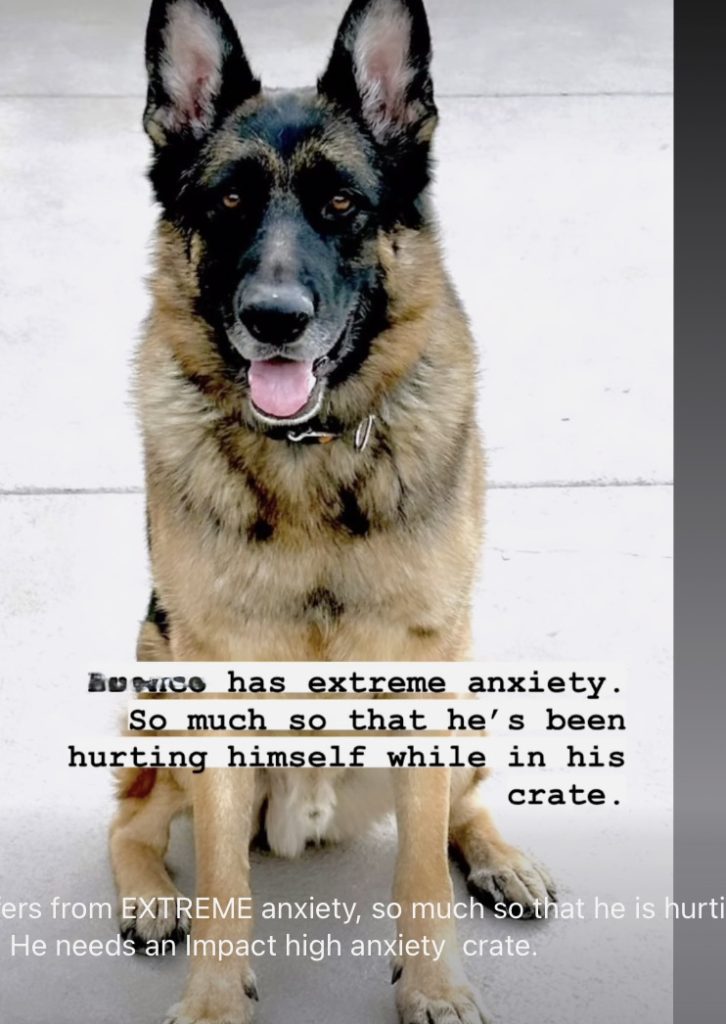
They claim to need them for the homeless dogs they’ve “rescued”—dogs who came to them already suffering from stress, anxiety, and trauma. A dog’s feelings and emotions are not without cause. Despite what some people think, dogs are not playing us, and they are not crybabies, drama queens, spoiled, or attention seekers. They are upset, frightened, and stressed. These emotional states are not voluntary, they are reflexive. It is state of mind.
When these dogs show their rescuers that they hate being crated, the rescuers don’t do what competent and caring people would do—remove the crate and address the reasons behind the dog’s behavior. Instead, they search out escape-proof crates that can re-traumatize the dogs over and over again (Corridan, Dawson & Mullan, 2024). Imagine rescuers thinking it’s a rational solution to treat anxiety by causing more anxiety. Since anyone can call themselves a rescue, the existence of inferior rescues is widespread, uncontrolled, and unchecked (Clifton, 2022). It’s the many well-run rescues and shelters that end up taking on the heartbreaking messes these inept rescues leave behind.
If You Choose a Dog You Can Handle, You Won’t Have to “Break” Him
Most people have heard the term “breaking” in reference to wild horses. It’s used in traditional horse training and refers to crushing the free spirit and wildness out of a horse. Although currently more gentle techniques are promoted in the horse world, there are still plenty of old-school “cowboy” techniques being used that use force, dominance, and pain in training horses. Once broken, the horse lives under the domination of humans. So, what does this have to do with dogs?
Crating can be seen as a breaking method for dogs. The end results of repeated forced crating can be comparable to the end results of horse breaking—dogs become beaten down and their spirits are crushed. They lose their exuberance for life and become more biddable.
The many pet owners who crate their dogs are persuaded to use crates by people who work in pet-related industries parroting all kinds of “nearly facts,” half-truths, and outright myths that they often believe themselves. These people don’t hesitate to recommended crates as babysitters, furniture protectors, behavior modifiers, and a great way to turn annoying dogs into relaxed dogs. Have you been told that dogs love their crates because they are like a den and make dogs feel protected and safe? Have you been made to feel like a failure because your dog has no manners? Have you been advised to turn a deaf ear to your dog’s cries for help? Those who have a stake in dog owners buying these narratives will likely protest this article, but their opposition is self-serving and weak. Frightened, unhappy, and anxious dogs who cry out for attention require attention. Dogs suffering from separation anxiety and claustrophobia need to be supported and loved, not locked in boxes.
Most people are capable of providing their dogs with a safe, spacious, and comfortable environment with natural lighting and a cozy place to sleep, room to move around in and stretch, water to drink, toys to play with, and music to listen to. Our dogs didn’t choose us—we chose them. This is why we owe them the best life we can give them.

If You Wouldn’t Do It to a Child, Don’t Do It to Your Dog
Studies show that there is a striking similarity between the neural circuitry and functioning of the brain in dogs and humans (Zablocki-Thomas, Rogers & Bales, 2022). If we need to alleviate a child’s fear, anxiety, or frustration, one would be hard pressed to find a psychologist who would recommend calling our child crazy and suggest we ignore their feelings, punish them, or put them in circumstances that worsen their distress. But we don’t think twice about doing any of these things to dogs.
In a craigslist ad written by a German Shepherd owner selling his escape-proof crate, he writes, “The crate is still indestructible except for the scratches inside because the crazy dog kept trying to get out.” Another ad posted by a man selling his high anxiety crate described his Husky’s behavioral change as “nicely low key” after routinely crating him for years. When questioned what that meant, he got defensive and wouldn’t answer. We can pretend we don’t know what we are doing, but that eventually comes back to haunt us. Because Huskies and German Shepherds can be strong minded and high spirited, and can crave mental stimulation, independence, autonomy, and freedom, they can suffer deeply when confined.
While walking with a bunch of dog owners, one man revealed he crated his dog even though his dog hated it. When asked why he kept crating his dog, he said, “His dog deserved it for all the shit he put him through.” This guy wasn’t evil. He just wasn’t ready to live with a dog and let the dog be a dog. Some people shouldn’t have a dog. Sadly, anyone can buy a dog, a shock collar, and a crate—the perfect recipe for misery.
Who Comes Up With This Stuff?
What mindset builds inescapable crates for dogs who are phobic, anxious, and fearful and calls it humane and safe? People skilled at engineering heavy-duty containers. People motivated to solve a mechanical problem. Not people who are concerned with animal welfare. Some folks still don’t view animals as conscious beings that are capable of suffering (Duncan, 2006). Escape-proof crates are not for the benefit of the dog, as so many companies claim. They exist to assuage a dog owner’s frustration by putting the frustration on the dog.
Dr. Jessica Pierce further states,
The marketing and sale of so-called anxiety crates—specially designed for dogs that experience anxiety when confined to a cage—is deeply troubling. If a dog is so distressed by being locked in a crate that they try to dig or chew their way out, the humane response is certainly not to lock them in an even more tightly constraining and anxiety-provoking crate. Rather, a compassionate response to crate anxiety involves not putting the dog in a cage at all, period (personal communication, 2024).
Enough, Already!
Let’s quit willfully turning a blind eye to what’s around us, and even within our own families: dogs being tormented in crates. Research has determined that overt signs of stress are understood by dog owners (Mariti et al., 2012). So, what are we thinking when our dogs are frantically trying to get out of their crate, yet we leave them there? We expect dogs to be chameleons and change to whatever environment we put them in. We must take greater responsibility for our dogs’ emotional states.
When stress signs are more subtle, pet owners can miss or misinterpret them. This could account for why some people say their dogs don’t mind the crates. Their dogs may resist a little going in, but, once inside, they seem calm and quiet. Soft, stoic dogs don’t react in overt ways. Instead, they make themselves look smaller to avoid attention, being bullied, or punishment. They remain still and tense, tails tucked in, and ears pinned back. They may tremble, pant, and drool, but even if we notice these signs, some of us have been taught to ignore them.
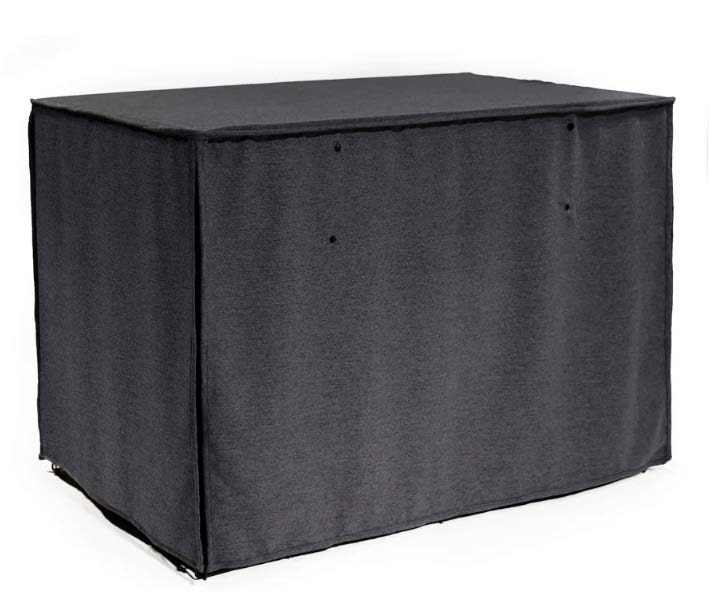
Don’t underestimate your dog’s intelligence and capabilities, nor the hurdles they have to overcome to live with us. We don’t need to hurt them, lock them up, or shock them to teach them. Dogs learn with patience, gentle touches, and soft voices. They thrive with kind treatment and harmony. I don’t know of any animal, including us, that doesn’t. It is imperative that a dog’s internal and external needs be fulfilled by allowing them to engage in what they innately feel is enjoyable, normal, and instinctive.
A Dog’s Life Is Too Short to Spend Any of It Locked in a Box
Legislation to ban crates, or at least restrict how they are used, is imperative. Self-delusion, sugar coating, and full outright denial are all ways we permit ourselves to “force crate” when we know, deep down inside, it is not normal, natural, or kind.
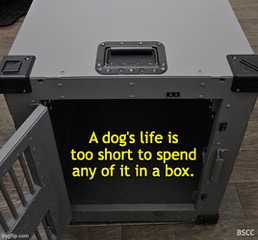
It doesn’t matter if you’ve used a crate, still use a crate, or have been promoting them. If you’re having a “what was I thinking?” moment, join the club. We’ve all been there. Change comes when we change. And who better to lead the way than real dog lovers who’ve been down the crating path and now understand that there are far more effective and humane ways to care for dogs.
Pet professionals who have recommended crates are now realizing they are a real welfare concern (Williams, 2023), so they have started to recommend healthier alternatives. If you need help, there are veterinary behaviorists and credentialed trainers who use methods that are safe, ethical, and kind. If billions of dog owners can keep their pets protected, happy, and healthy without crates, so can you.
Author’s disclosure: I’m not a pet expert and I don’t wish to claim expertise I don’t have. I am a person who has lived with dogs for many decades. I also know what claustrophobia feels like. I wrote this for dogs because I believe they are all beautiful souls, and I owe them for a lifetime of fun, happiness, and loyal companionship.
About the Author
Gwendy Williams is a retired realtor living in Vancouver, B.C., Canada. Her world has always included dogs and cats, and currently she and her husband share their home with a senior Doberman/Greyhound cross. For decades, Gwendy has been an animal advocate contributing to and volunteering with various groups. She founded the BanShockCollars.ca website in 2007 and the PetCollarAwareness.com website in 2013 to zealously promote the idea that rewards and kindness, not pain and force, bring joy to our animals and their willing cooperation. Although pet care has significantly improved over the years, she is sensitive to the reality that we still have a long way to go, hence this article.
References
Berns, G.S. (2023). Deciphering the dog brain with fMRI. Trends in Neuroscience, 46(3): 173-175. 10.1016/j.tins.2022.10.005
Clifton, M. (2022, June 11). Why would a smart dog on the loose say, “Don’t rescue me!”? Animals 24-7. https://www.animals24-7.org/2022/06/11/why-would-a-smart-dog-on-the-loose-say-dont-rescue-me-by-beth-clifton/
Corridan, C.L., Dawson, S.E. & Mullan, S. (2024). Potential benefits of a ‘trauma-informed care’ approach to improve the assessment and management of dogs presented with anxiety disorders. Animals (Basel), 14(3): 459. 10.3390/ani14030459
Duncan, I.J.H. (2006). The changing concept of animal sentience. Applied Animal Behaviour Science, 100(1-2): 11-19. https://doi.org/10.1016/j.applanim.2006.04.011
Impact Dog Crates. (2023, July 20). Escape proof High Anxiety Impact Dog Crate [Video]. YouTube. https://youtu.be/Sqo6c3OWpz4?si=xZzOZeh786uShCEY
Kube, T., Elssner, A.C. & Herzog, P. (2023). The relationship between multiple traumatic events and the severity of posttraumatic disorder symptoms—evidence for a cognitive link. European Journal of Psychotraumatology, 14(1): 2165025. 10.1080/20008066.2023.2165025
Mariti, C., Gazzano, A., Moore, J.L., Baragli, P., Chelli, L. & Sighieri, C. (2012). Perception of dogs’ stress by their owners. Journal of Veterinary Behavior, 7: 213-219. https://banshockcollars.ca/pdf/Perception-of-dogs-stress-by-their-owners.pdf
Williams, G. (2023). The crating craze: its impact on well-being. I Just Had to Say It. Say What? https://poodlebrains.com/the-crating-crazeits-impact-on-well-being/
Zablocki-Thomas, P.B., Rogers, F.D. & Bales, K.L. (2022). Neuroimaging of human and non-human animal emotion and affect in the context of social relationships. UC Davis. Report #: ARTN 994504. https://doi.org/10.3389/fnbeh.2022.994504
Videos
Have you been advised to turn a deaf ear to your dog’s cries for help? https://youtu.be/FB4zry5u-bI?si=6EOccjvpi7V8Rrug
Impact High Anxiety Crate promotional video: https://www.youtube.com/watch?v=Sqo6c3OWpz4
The despondent state of hopelessness is celebrated by some balanced and punishment-based trainers, and even some pet owners, as positive behavioral change: https://youtu.be/XDw26SUd4eA?si=_dX1ytejsFV8VPLh
Additional Reading
Bekoff, M. (2019, March 15). Dogs, captivity, and freedom: unleash them whenever you can. Psychology Today. https://www.psychologytoday.com/us/blog/animal-emotions/201903/dogs-captivity-and-freedom-unleash-them-whenever-you-can
DeGrazia, D. (2022). The harms of suffering, confinement, and death. In: Animal Rights: A Very Short Introduction, p. 54. Oxford Academic. https://doi.org/10.1093/actrade/9780192853608.003.0004
Part, C.E., Kiddie, J.L., Hayes, W.A., Mills, D.S., Neville, R.F., Morton, D.B. & Collins, L.M. (2014). Physiological, physical and behavioural changes in dogs (Canis familiaris) when kennelled: testing the validity of stress parameters. Physiology and Behavior, 133: 260-271. 10.1016/j.physbeh.2014.05.018
Pierce, J. (2023). Who’s a Good Dog? and How to Be a Better Human. Chicago Press. https://www.jessicapierce.net/whos-a-good-dog

